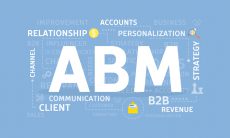If you are a B2B company, you likely go to market by industry. So, you might have products that are bought by several industries, but maybe they do different things with your product in different industries. Perhaps they don’t have the same benefits across industries. Or they use different language to describe what they do or what the benefits are.
Those are all good reasons to have content targeted at specific industries. Each industry might need its own explanation of what your product does for them. If you go to market by industry, you probably have these pages already. The question is, how have you identified those pages? Have you tagged them with the industry that they are targeted to?
At first you might ask, “Why do I care?” And maybe you shouldn’t care. As long as the people that need it can find that page, either in search or through navigation, maybe having no tagging is fine. But before you hit the back button, let’s look at a couple of reasons that you might care:
- You want people to be able to drill down in site search. Yeah, site search. I know that everyone is excited about SEO, and they should be focused on bringing visitors to the site, but maybe you should also care about them finding what they are looking for once they get there. If you do, maybe you might want to allow people to drill down in search results by their industry.
- You want to personalize your site by industry. Many Visitor ID solutions can tell you the industry of the visitor to your site. All you need to do is add a JavaScript tag to your pages and, for at least some of them, you’ll be told their industry so that you can place ads or links on your pages that tease content from their industry. We’ve seen nine times the click rate for industry-focused content.
- You want to do both. What if you knew their industry before they searched? Could you filter industry content for them automatically? Or at least rank it higher?
So maybe you are convinced at this point of the value if industry tagging, but not sure how to do it. There are usually three problems:
- Deciding the industries. I know, I know, you have your own. Well, that won’t help, because you need to follow a standard for your coding that matches the standard that the Visitor ID technologies use, which is usually the ancient Standard Industry Classification (SIC) (last updated in 1987) or North American Industrial Classification Systems (NAICS). You likely won’t need the whole taxonomy, but you can take a subset of NAICS that applies to your web visitors and your content.
- Tagging the content. Most companies tag manually–asking their content authors to correctly identify the industry pertaining to each web page. People are actually not very good at any coding task where they must select from a few dozen (or more) choices.
- Dealing with change. As business and technology evolves, new industries arise. It’s hard to get your team to agree to the changes and even harder to re-tag all the content by hand. Too often, the taxonomy remains frozen in time because no one has the stomach to take on the work that updates require.
It doesn’t have to be that way. You can use text analytics and machine learning to automatically classify your content by industry. Once you have that working, you can update your tagging every time NAICS updates their list, because you are free of the huge manual re-tagging effort. More importantly, automatic classification can be done consistently and its accuracy can be improved over time. If you haven’t looked into AI techniques for classifying content, this might be the time to do it.





